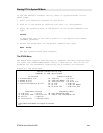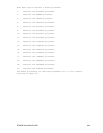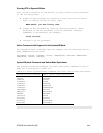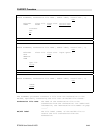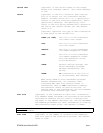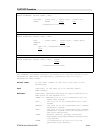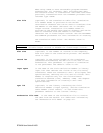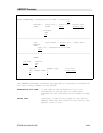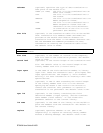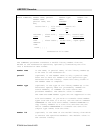
ETU400 User Guide 011603
G-11
record len1 (optional) is the record length of the target
AS/400 file (“AS/400 label”). This value defaults
to 128.
retain (optional) is the file retention (how long the
file is to exist) for the translated “AS/400
label2”. Allowed values are T or J. Specifying T
results in the file existing indefinitely (until
specifically deleted), and specifying J will
result in the file being automatically deleted at
the end of the current AS/400 job. The default
value is T.
reformat (optional) specifies the type of data translation
to take place on the AS/400 file.
*TEXT (or *YES) the file is to be translated
into ASCII text format.
*DIF the file is to be translated
into DIF format.
*BASICS the file is to be translated
into BASIC Sequential format.
*TAB the file is to be translated
into BASIC Sequential format
with tab characters as the
field delimiters.
*SAVE permits offline storage, and
moves executable programs
between workstations (see
below).
*NONE no translation of the file is
to be performed (the default).
When using *SAVE to move executable programs
between workstations, all necessary data
(including Mac data and resource forks) is
transferred. Data is not translated to EBCDIC,
and therefore cannot be used on the host. To
restore data to the workstation, use the FILETOPC
procedure with reformat type *SAVE.
xlat file (optional) is the translation table file. Translation
file members ATOE1 and ATOE3 are provided on the AS/400
distribution diskette and are used to translate from
the ASCII to the EBCDIC character set. See the EDITABLE
and COMPILE procedures for more information on creating
new translation table files. The default is ATOE1.
Mac Users: Do not use the “xlate file” default value. You must use
the value ATOE1M.
xlat size (optional) is the number of records in the temporary
work file used in the translation process. The default
value is 1000.



